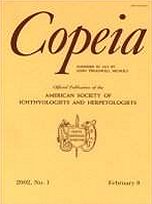Skeletochronology is the most commonly used tool for evaluating the age of amphibians and reptiles. However, the accuracy of skeletochronology is questionable because few studies have utilized individuals of known age to calibrate their results. In this study, the accuracy of skeletochronology was assessed using individual Arizona Tiger Salamanders (Ambystoma tigrinum nebulosum) that were of known ages that varied from 2–15 years. Cross-sections of salamander toes were analyzed to compare the number of LAG (lines of arrested growth) to the actual age of known cohorts. Our results suggest that skeletochronology was an inaccurate tool for estimating age in this population of A. tigrinum nebulosum because it grossly underestimated age. The high intensity of endosteal resorption coupled with rapprochement of the most peripheral LAG may have produced these results. Our research indicates that skeletochronological studies that do not use individuals of known age for calibration may underestimate age.
How to translate text using browser tools
1 May 2007
Accuracy Assessment of Skeletochronology in the Arizona Tiger Salamander (Ambystoma Tigrinum Nebulosum)
Christopher J. Eden,
Howard H. Whiteman,
Leon Duobinis-Gray,
Scott A. Wissinger
ACCESS THE FULL ARTICLE





